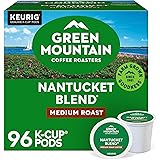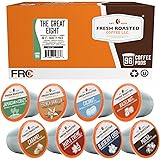Mastering Home Espresso: Your Definitive Brewing Guide
Achieving café-quality espresso at home often presents unique challenges. Inconsistent shots, uneven extraction, and bitter flavors can deter even enthusiastic beginners. Yet, this pursuit yields immense satisfaction. This comprehensive guide, complementing the insights shared in the video above, demystifies the espresso brewing process. It provides expert techniques and best practices for consistently excellent results. Let’s delve into the nuances of crafting your perfect espresso shot.
The Essential Hardware: Selecting Your Espresso Machine
An espresso machine forms the core of your home setup. Many models populate the market. The Breville Barista Express stands out as a solid beginner choice. It integrates grinder and brewer, offering a complete package. Such machines simplify the initial investment for new home baristas.
Ensure your chosen machine is fully hydrated. Maintain proper water levels for consistent operation. A capable machine provides the necessary pressure and temperature control. This forms the bedrock for superior espresso extraction.
Bean Selection: Decoding Coffee Roasts and Origins
Bean choice profoundly influences your espresso’s flavor profile. Dispelling a common myth, espresso does not demand the darkest roast. Any roast level, from light to dark, can yield excellent espresso. Medium roasted beans often provide complex and balanced flavors. They highlight intrinsic coffee characteristics.
Origin also dictates flavor nuances. Ethiopian beans differ from Colombian varieties. Experimentation is crucial here. Explore different roasts and origins to find your preferred taste. This iterative process defines the joy of espresso discovery.
Ethical sourcing also plays a role. Services like Trade Coffee connect you with quality roasters. They offer over 400 ethically sourced coffees. This ensures both excellent taste and responsible practices.
Precision Dosing: Weighing Your Coffee Grounds
Accurate coffee dosing is non-negotiable for consistent espresso. Weighing your beans ensures repeatable results. For a standard double shot, target 17 to 18 grams of coffee. This parameter optimizes extraction for many home machines.
You can weigh whole beans, then grind them. Alternatively, grind directly into the portafilter. Zeroing out the portafilter weight beforehand is essential. Weighing whole beans minimizes exposure to air. This helps maintain bean freshness longer. Avoid leaving beans in the hopper for extended periods. Heat from the machine can accelerate staling.
Grind Consistency: The Foremost Variable
Grind consistency is paramount in espresso preparation. It dictates extraction rate and flavor balance. A high-quality grinder is an indispensable tool. Even an expensive machine cannot compensate for poor grind quality.
Too coarse a grind results in under-extracted coffee. This manifests as sour, acidic flavors. Too fine a grind leads to over-extraction. This causes bitter, astringent notes. The ideal grind allows water to pass evenly. This extracts desirable soluble solids effectively.
For the Breville Barista Express, a grind setting of four or five often works well. Adjust this based on your specific beans. Fine-tuning grind size is a continuous process. It is arguably the most impactful variable for shot quality.
The Art of Tamping: Leveling for Uniformity
After grinding, the coffee grounds require proper tamping. This compacts the coffee puck uniformly. Leveling the grounds first helps achieve an even surface. Tap the portafilter gently on the counter to settle the coffee.
Tamping technique demands consistency. Hold the tamper like a doorknob. Keep your elbow straight above it. Apply firm, even pressure directly downwards. Avoid any diagonal angle. An uneven tamp promotes channeling. Water bypasses the coffee, leading to poor extraction.
Pressure should be firm but not excessive. Focus on consistent pressure each time. A slight twist of the tamper polishes the puck. While not strictly necessary, it can aid surface uniformity. Consistent tamping ensures water flows through the entire coffee bed evenly.
Espresso Extraction: The Moment of Truth
The extraction phase is the apex of espresso brewing. Ensure your machine is pulling double shots. Utilize the 17-18 gram dose. Each machine extracts differently. Previous variables, especially grind and tamp, heavily influence the outcome.
Target an extraction time of 25 to 30 seconds. This includes a 5-second pre-infusion phase. Pre-infusion saturates the coffee puck. This minimizes channeling upon full pressure application. If your machine has a pressure gauge, aim for the optimal espresso range.
Ultimately, taste is the definitive indicator. Good espresso should not taste sour, salty, or excessively bitter. It should exhibit balance and richness. Continual testing and adjustment are key. Strive for the 25-30 second range. Then, modify grind and dose based on flavor outcomes.
Understanding Crema: A Visual Cue
Crema provides a visual indicator of a good shot. This reddish-brown foam layer sits atop the espresso. It results from the emulsification of coffee oils and gasses. Crema is vital for flavor, texture, and latte art aesthetics. Its presence signals a well-extracted espresso. It confirms the successful emulsification process.
Beyond the Brew: Sourcing and Support
Sourcing high-quality beans elevates your home espresso experience. Trade Coffee offers access to over 50 top roasters. Their selection includes over 400 ethically sourced options. They match you with coffees tailored to your preferences. This simplifies finding exceptional beans for your brewing journey.
As a reminder, the video creator extended an exclusive offer. The first 100 people received 30% off their first coffee order. This initiative encouraged exploration of diverse, high-quality beans. Embracing varied coffee sources enhances your home espresso adventure.







